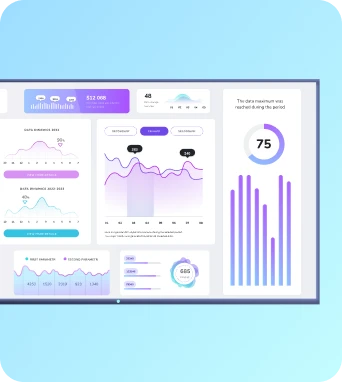BrightAuthor
BrightAuthor is BrightSign’s Windows application for creating, scheduling and publishing presentations to BrightSign media players. It provides a timeline-based editor, support for multimedia, interactivity and live data feeds, and export options for local playback or distribution via a BrightSign Network or third-party CMS like Fugo.
BrightAuthor
Core features and workflow
BrightAuthor centres on a project-based workflow where a user creates presentations composed of zones, playlists and events. The timeline and tag interface allows sequencing of video and image playback, layering of HTML5 and ticker zones, and insertion of interactive elements such as GPIO, serial triggers or touch events for supported BrightSign models. Support for native video decoding, standards-compliant H.264/H.265 files and hardware-accelerated playback ensures smooth performance on BrightSign devices, while options for preloading and seamless transitions help avoid playback gaps. Scheduling tools permit time-of-day, day-of-week and date-range rules, and the system can assign different playlists to different players or groups, which is useful for multi-site rollouts with localised content requirements. BrightAuthor also provides facilities for external data integration. You can wire RSS, text feeds or CSV-driven content into dynamic zones and combine them with scripting or HTML5 widgets for live dashboards or news feeds. For interactive installations, BrightAuthor exposes player I/O and network commands so kiosks and wayfinding screens can respond to sensors or user input. The application exports a BrightSign-ready package that contains all media and configuration; this package can be deployed via removable media, local network or through BrightSign Network. For organisations using a third-party platform such as Fugo.ai, the exported assets and schedules can be adapted or re-created within the CMS to leverage cloud-based device management, remote updates and central reporting.
Compatibility, deployment and integration with Fugo
BrightAuthor is primarily designed for BrightSign hardware, and BrightSign players expect the exported package structure and control files produced by the application. That said, many digital signage operators work with mixed fleets or prefer cloud-first workflows. In such cases, BrightAuthor serves as a content preparation and testing tool: designers build and validate presentations locally, then supply media, HTML5 assets and schedule logic to a management platform like Fugo for distribution. Fugo supports a broad range of media formats and HTML5 widgets, and it can replicate timing and layout rules created in BrightAuthor so that playback behaviour remains consistent across non-BrightSign screens. This hybrid approach combines BrightAuthor’s device-level optimisations with Fugo’s centralised scheduling, remote monitoring and analytics. For teams migrating from BrightSign Network or seeking centralised orchestration, consider the differences in update methods and device control. BrightAuthor exports are ideal for edge-first deployments where content must remain on the player, and BrightSign Network offers tight device-level integration for BrightSign fleets. Fugo and similar CMS solutions instead use lightweight players or apps on supported hardware, enabling features such as multi-user permissions, cloud-based versioning and easy bulk scheduling. When integrating, plan for asset management (ensuring all media files referenced by a BrightAuthor project are accessible to the CMS), consistent time zone handling for schedules, and testing of interactive triggers to confirm equivalent behaviour on non-BrightSign players.
Practical tips and troubleshooting
When working with BrightAuthor in a professional signage programme, start by organising source media into a clear folder structure and using consistent naming conventions to avoid broken references after export. Test complex presentations with HTML5 or custom widgets on the target BrightSign model to confirm hardware compatibility, and validate network and I/O triggers in situ. For mixed fleets, export media and metadata from BrightAuthor and import or recreate schedules in your CMS to leverage centralised control and reporting. Keep firmware and BrightAuthor versions aligned across development and production environments to minimise version-related playback issues, and document any device-specific workarounds for site teams. If you need assistance integrating BrightAuthor workflows with cloud-based device management, or want to evaluate how BrightAuthor exports map to Fugo deployments, Fugo’s support and professional services can help migrate schedules, convert assets and set up remote monitoring. Learn more about BrightAuthor – schedule a demo at https://calendly.com/fugo/fugo-digital-signage-software-demo or visit https://www.fugo.ai/.
Keep the learning going...
Bluetooth-enabled displays
Bluetooth-enabled displays are screens with integrated Bluetooth radios that support device discovery, peripheral pairing and low-energy signalling. They enable local interactions with keyboards, sensors, mobile devices and beacons for proximity-triggered content, reducing cabling and simplifying on-site control for TV dashboards and digital signage deployments.
Brightness (nits)
Brightness, expressed in nits, is the measure of a display's luminous intensity per square metre. For digital signage and TV dashboards, nits indicate how well content will remain visible under different ambient lighting conditions, whether mounted indoors near windows or in direct outdoor sunlight.
Brightness adjustment tools
Brightness adjustment tools are combined software and hardware controls that regulate display luminance on digital signage. They manage automatic or manual brightness, respond to ambient light, enable scheduling and power-saving modes, and preserve readability and device longevity across TV dashboards and workplace screens.



